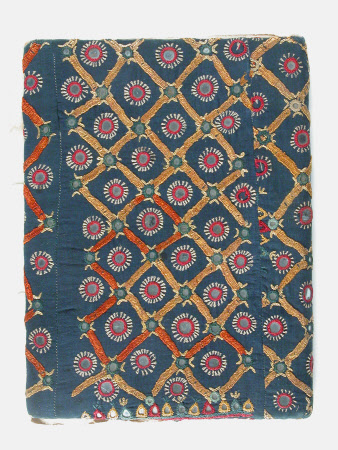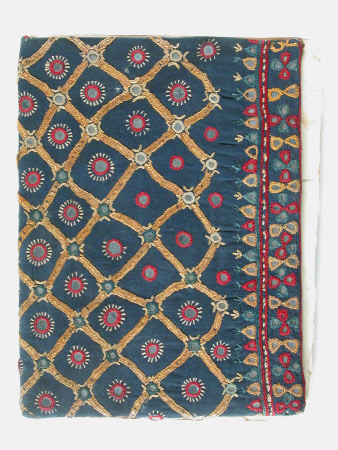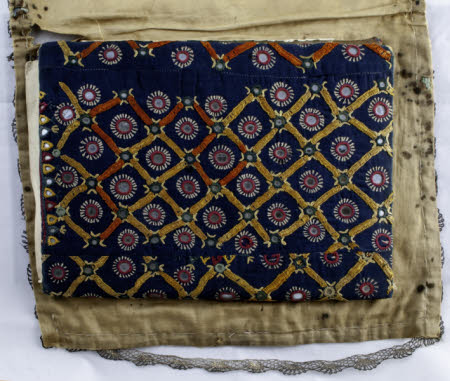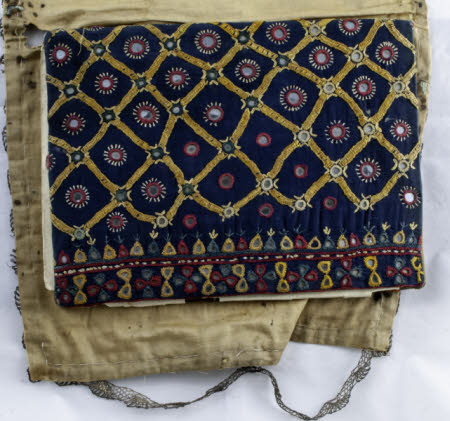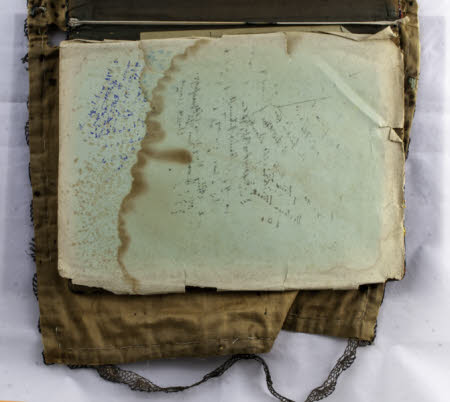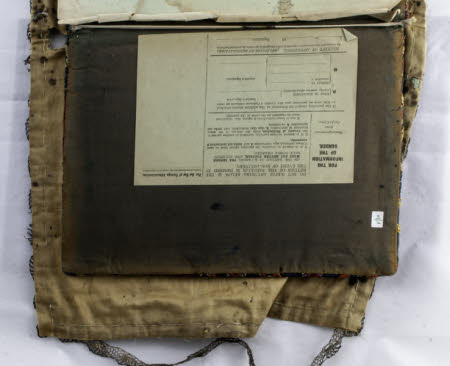Document wallet
Category
Objets de vertu
Date
1875 - 1900
Materials
Card, cotton, blotting paper and silvered glass
Measurements
280 mm (L); 210 mm (W)
Order this imageCollection
Wightwick Manor, West Midlands
NT 1289918
Summary
Rectangular document wallet containing sheets of blotting paper and a blank postal note, decorated with blue cotton and Indian Shisha mirror embroidery.
Full description
Rectangular document wallet containing sheets of blotting paper, decorated with blue cotton and Indian (Shisha) mirror embroidery. Shisha work is a type of applied decorative needlework that is characterised by small pieces of reflective material that are sewn onto a cloth ground material. This technique is also known as mirror embroidery. It is popular in many parts of Asia. The term derives from (Persian) shisheh for 'glass'. In parts of India this type of work is also known as Abhala Bharat (Hindi). It is believed that shisha embroidery originated in India in the seventeenth century, although it may well be older than this date. The older examples of shisha embroidery used mica to create the shiny effect. Later the mica was replaced with tin or silver, and thin coins. Even beetle wings were sometimes used (see also beetlewing embroidery). These were then replaced by glass in the early twentieth century. The glass was blown into large, thin bubbles and broken into small, round pieces – hence the earlier examples have a slight convex curve. At first the making of mirrors for shisha embroidery was regarded as women’s work, but by the latter half of the twentieth century most of the glass was mass-produced with machine cut glass with a silvered backing. By the end of the twentieth century shiny, plastic discs had more or less replaced the use of glass. Because the mica and mirror glass pieces have no holes that can be used to fasten the circles down to the ground material, a system of criss-cross threads is used. Sometimes a round, tin frame is placed over the glass and then the frame is sewn down onto the ground material. By the end of the twentieth century small plastic frames were becoming more and more common as a method of holding down the mirror glass or plastic discs. Shisha work is widely used on clothing (such as dresses and caps), as well as for wall and door hangings, covers and so forth. By the late nineteenth century shisha work of various types and styles was being produced in Afghanistan, China, Indonesia, India, Iran, as well as what was to become Pakistan.
